Art Processes and Sustainability
Trash Bear Studio is committed to creating 100% sustainable art by using eco friendly, salvaged, upcycled, compostable and recycled paints, canvases, printing papers, and packaging materials.
Mission
All people should have access to art creation, no matter any socio-economic situation. Trash Bear Studio aims to show how fine art can be made from anywhere, using what is already in a person's immediate environment, wether that is a forest, a mountain or a city. No one's surroundings should limit them from creating art, and by connecting or reconnecting to each of our habitats, a broader appreciation for nature and the protection of the planet can be achieved.
Information on Pigments
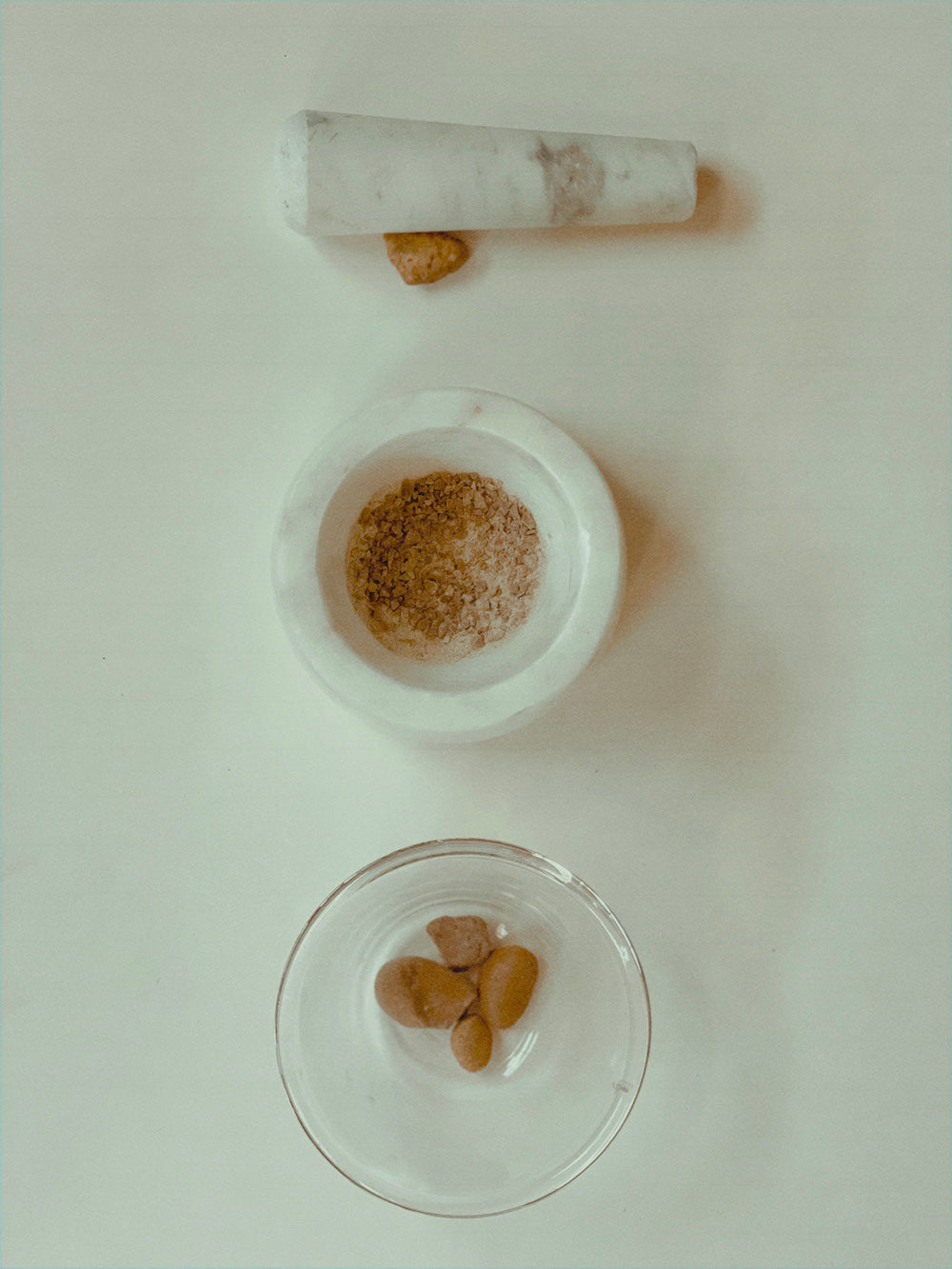
How do you process material to become pigments?
Materials can be broken down using a combination of grinding, sifting, and mulling. It usually starts with a mortar and pestle (I've been known to use the ol' hammer on the ground as well for big chunks) to start the grinding process. Sifting comes next, which leaves you with the pieces that still need to be ground and then process repeats over again until everything can fit through the sifter.
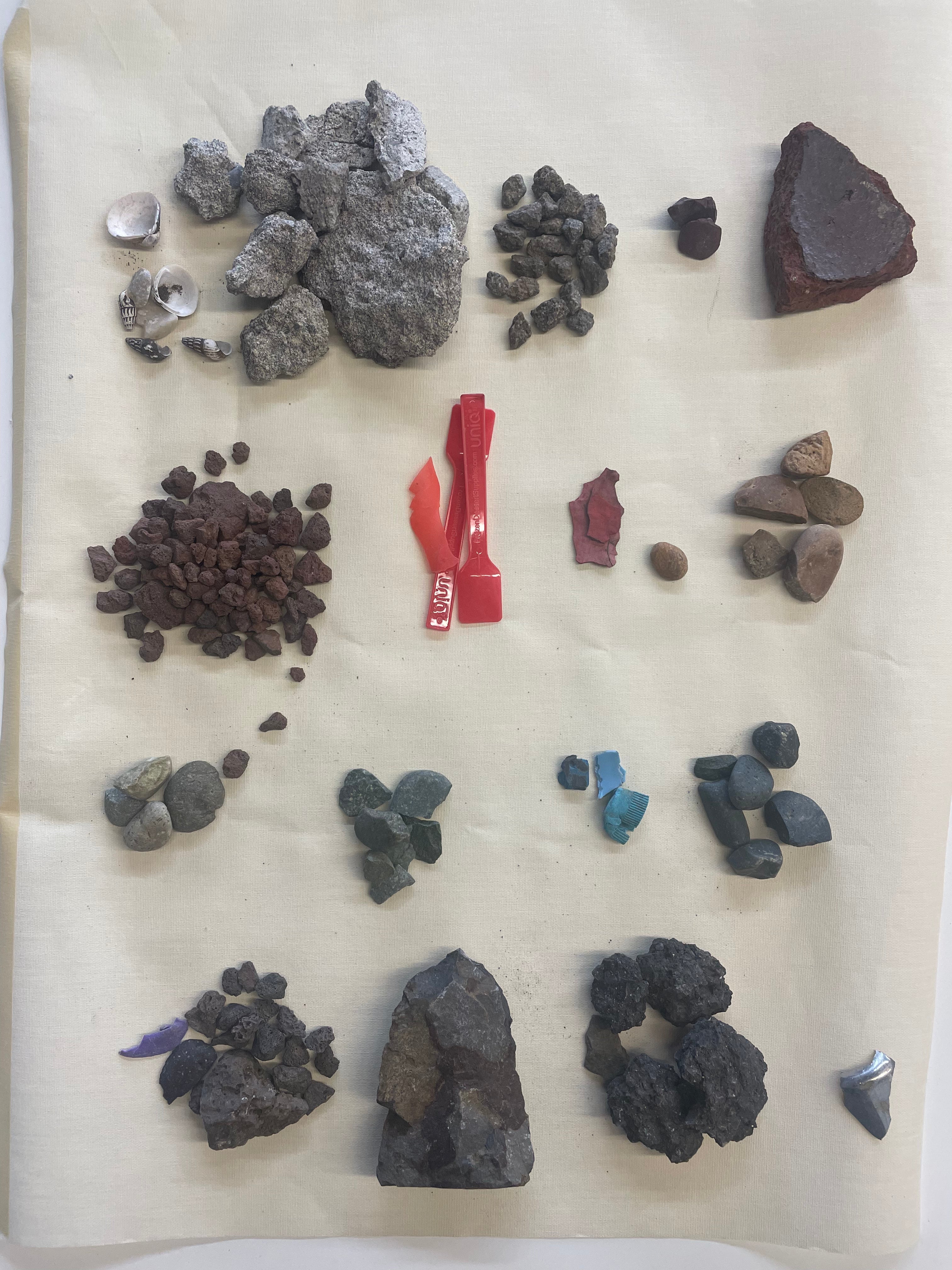
Where can pigments be found?
Literally everywhere! You do not have to live in a magical mountain forest to find and forage pigments, and some of the best pigments I have found come from experiments with breaking down old building materials, like bricks and tile.
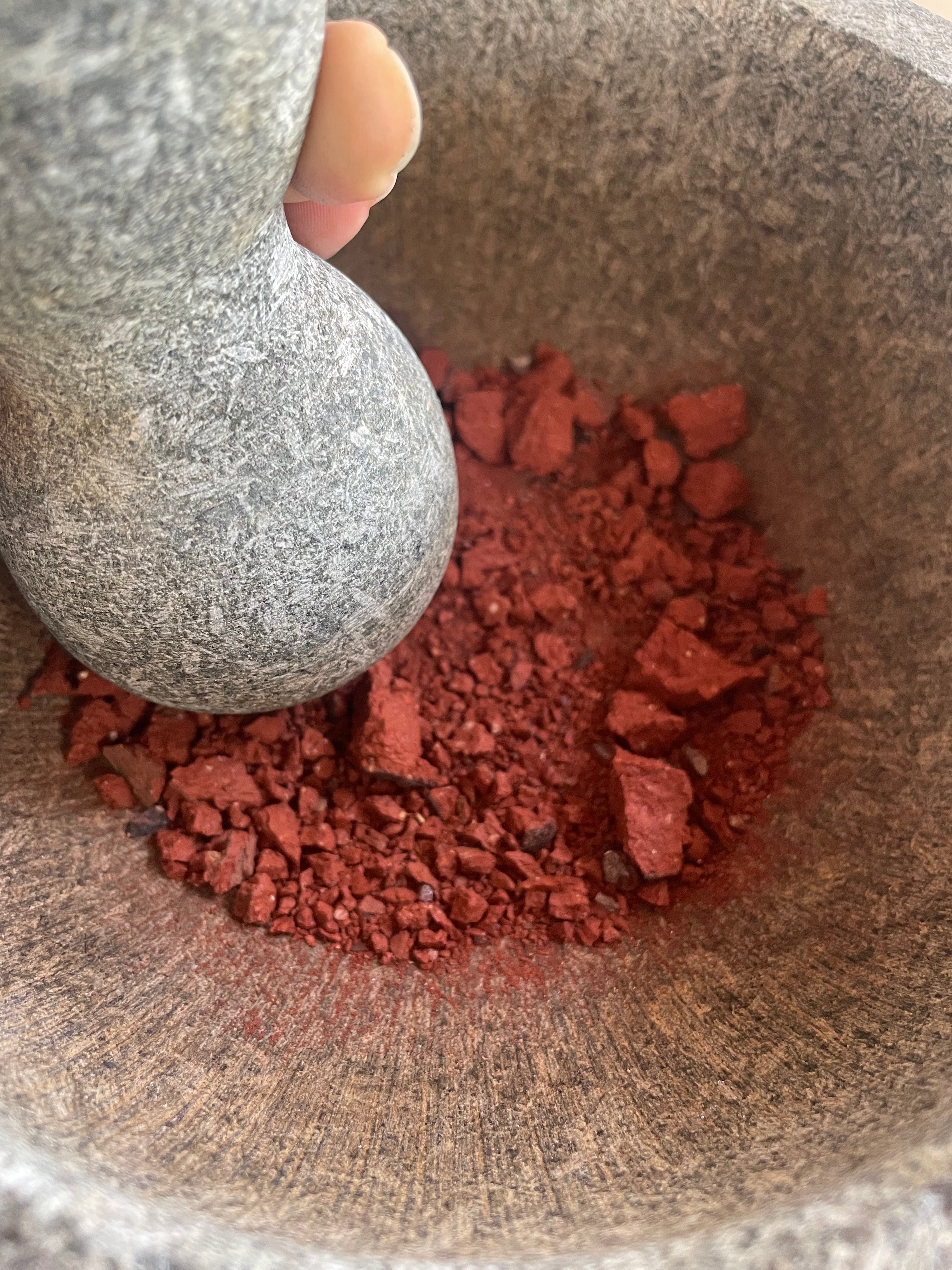
How do they compare to store bought paints?
Paints made with your own handmade pigments handle a bit differently than store-bought paints, which can take some getting used to. They tend to have a bit more texture when painting, and can have more transparency, needing more layers for depth of color. That being said this isn't necessarily negative, in fact it can inform paintings in new ways!
IT CANNOT BE SAID ENOUGH
ALWAYS WEAR A MASK AND SAFTEY GOGGLES
Your lungs, your eyes, your entire body will thank you for it.
Information on Mulling
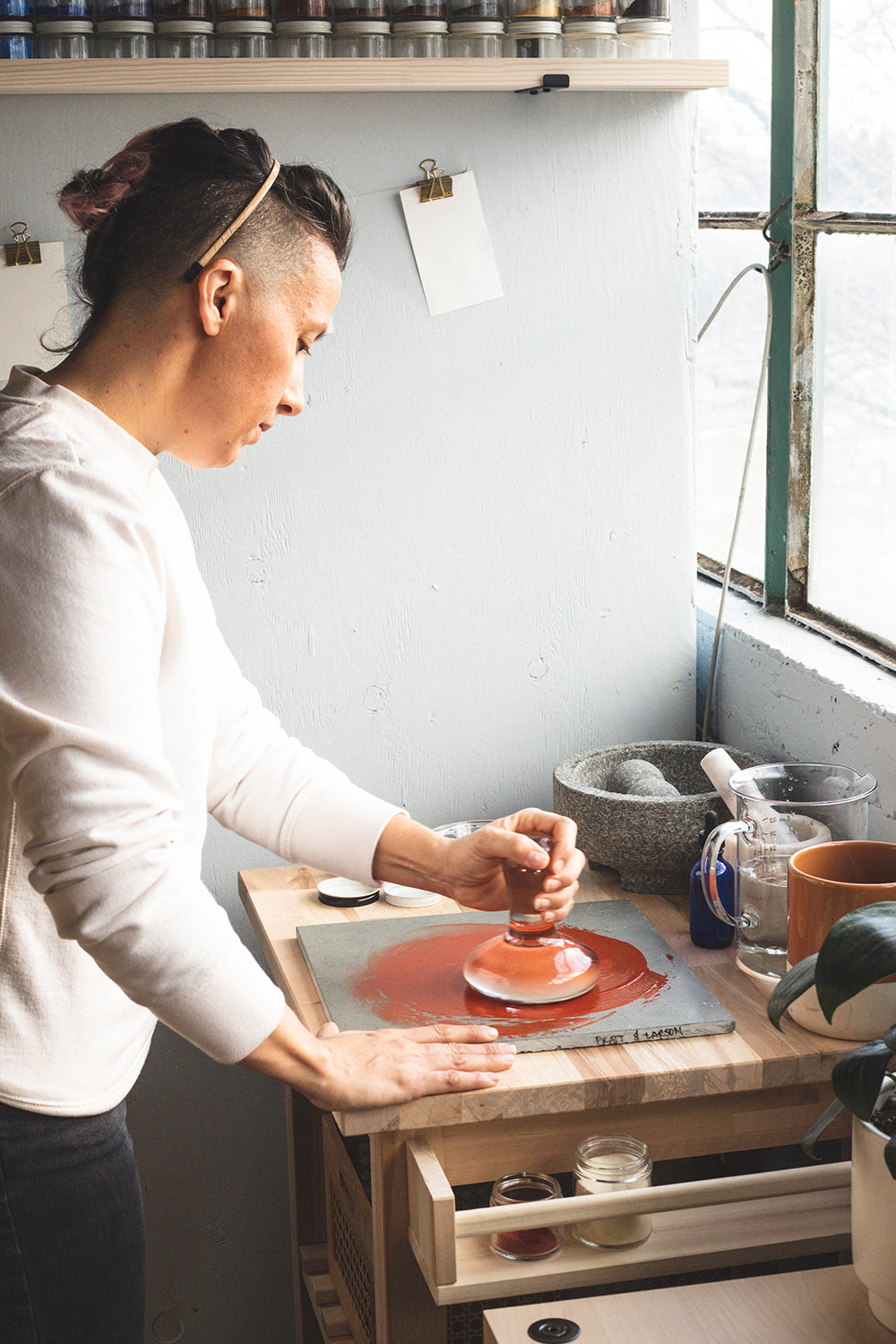
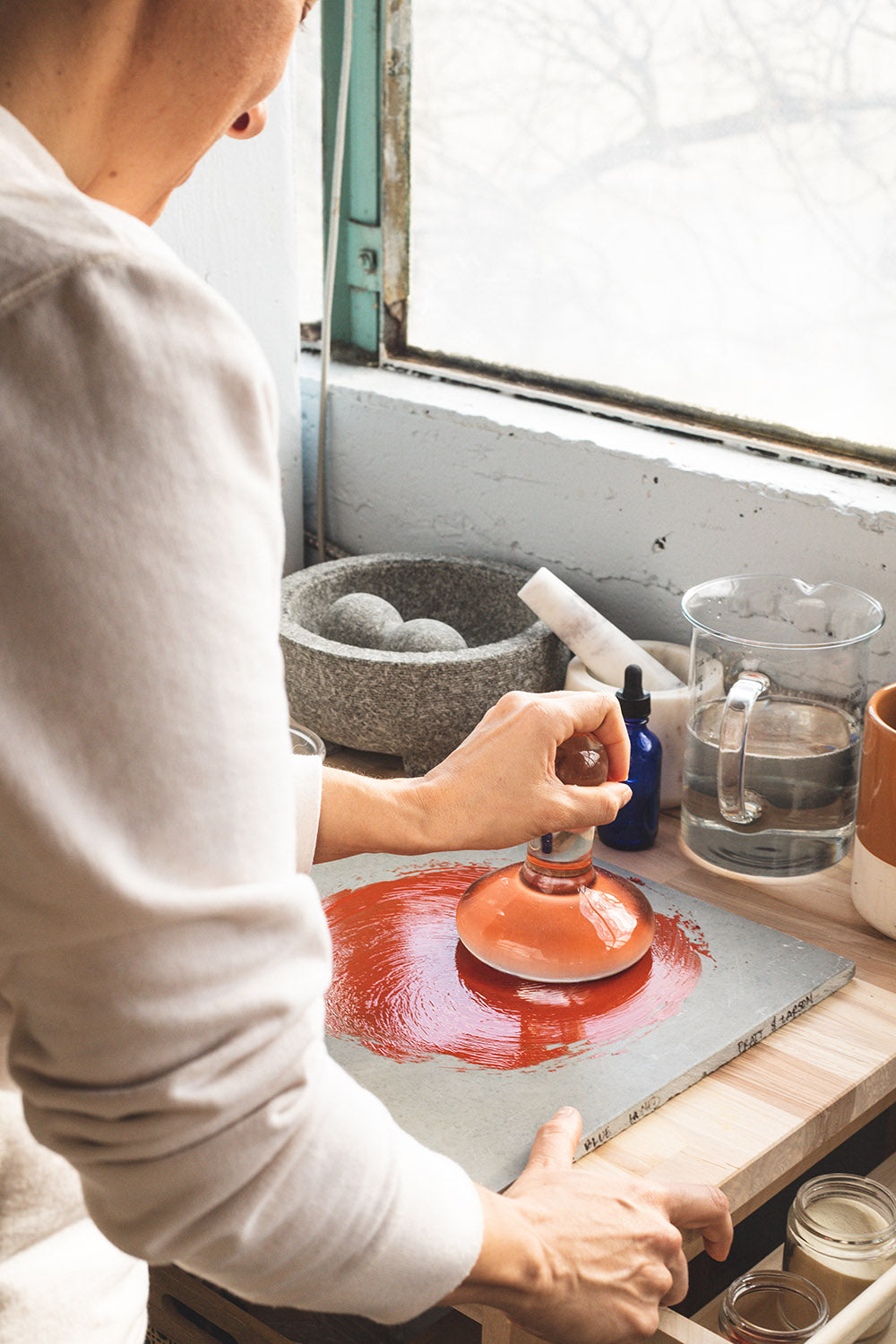
Milling or Mulling is the process of dispersing the pigments into the binder. Its uses two extremely hard surfaces rubbing together to mix. There are professionally made mullers (the thing that I'm holding in the photos) made of glass that kind of resemble an air hockey mallet/pusher thing. However you can use anything that is glass and has a flat bottom-- I've found some great candlesticks at secondhand stores that work.
The part that the pigment and binder are actually mixed on is any kind of hard, non porous surface. Marble works really well, and here I'm using an old stone tile.
This part of the process also helps really refine any pigments that may still have a little grit to them.
Please Note
I am not wearing a mask or safety goggles in this photo because it is just that, a photo from a photo shoot. The photographer, for some reason, really wanted to see my face. Normally I look like I'm ready for a hardcore science experiment.
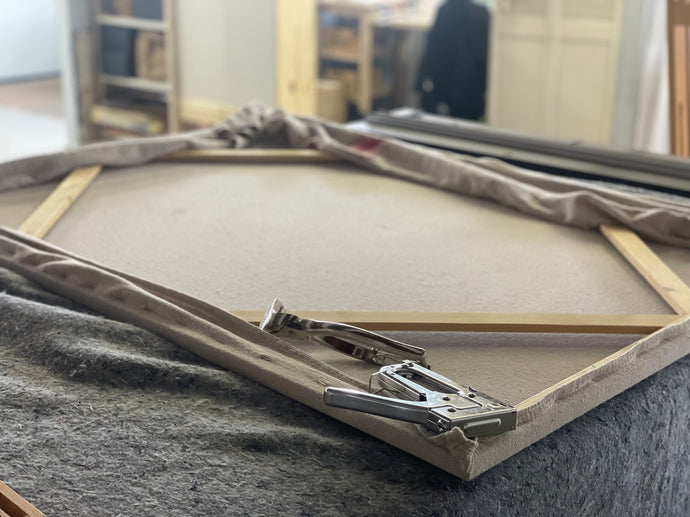
All about
Making Upcycled Canvases
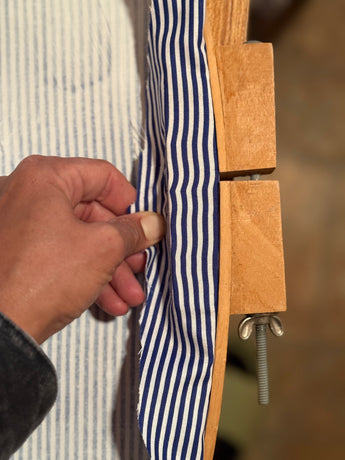
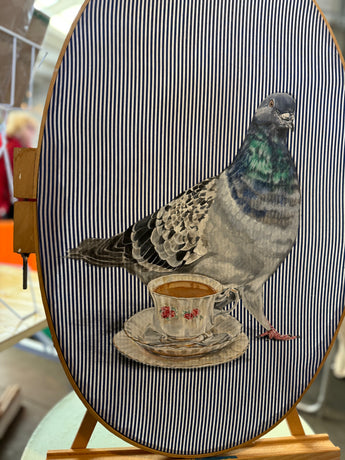
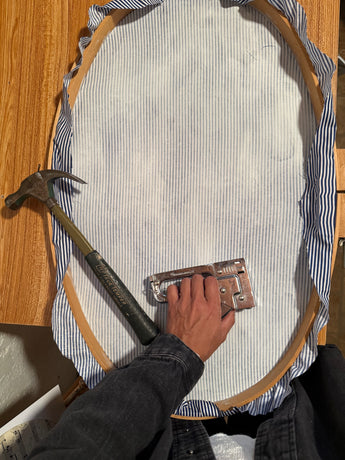
What can be a
Canvas?
Almost anything can be a canvas, it just comes down to what type of media you want to use with it, and how you prep it for that use. I should note that canvas itself is a specific type of material that is used in traditional painting with oils and acrylics stretched over a wood frame. Here I'm using it also a term for anything you want to create art on, which I think is kosher to do, but I'm sure there is an Art Society for the preservation of Art Societies somewhere that is quite turned off by this. (I didn't want to join it anyway)
I have had some EPIC fails to learn (and continue to learn) that you cannot force a material to be something other than what it is. What does that even mean? For instance, I found a cool old map and wanted to paint a rabbit on it. I had a frame all picked out and got overly excited to get started. Generally with any upcycled paper product, you have to have a hard, non porous surface to adhere it to if you are going to use a wetter medium like paint. Otherwise it tends to be a wrinkly mess, as the paper fibers warp and transform doing a super cool interpretive dance that is fun to watch, but may not be what you are going for in regards to a flat surface. So me being overly excited and also not having a hard backing board to adhere the map to, somehow knew better than to just paint directly on the paper, but I also decided instead to adhere the map to a piece of thick cardboard because I thought this time I was special and cardboard suddenly didn't absorb moisture? Well it had a wrinkly meltdown, I had a weepy meltdown, and then I reminded myself that sometimes I have to remind myself Im not a wizard, the world does have physical rules, and you can't wish materials to behave in any way other than they are meant to.
All of that to say that the most fun part of creating canvases is experimenting. Give yourself tons of space (and patience) to experiment with fabrics and materials because they often surprise you, and when they get weird they generally get weird in a good way if you let them do their thing. I'll have more info in my blog area if you want info about specific materials I've worked with and what to expect when handling them.
